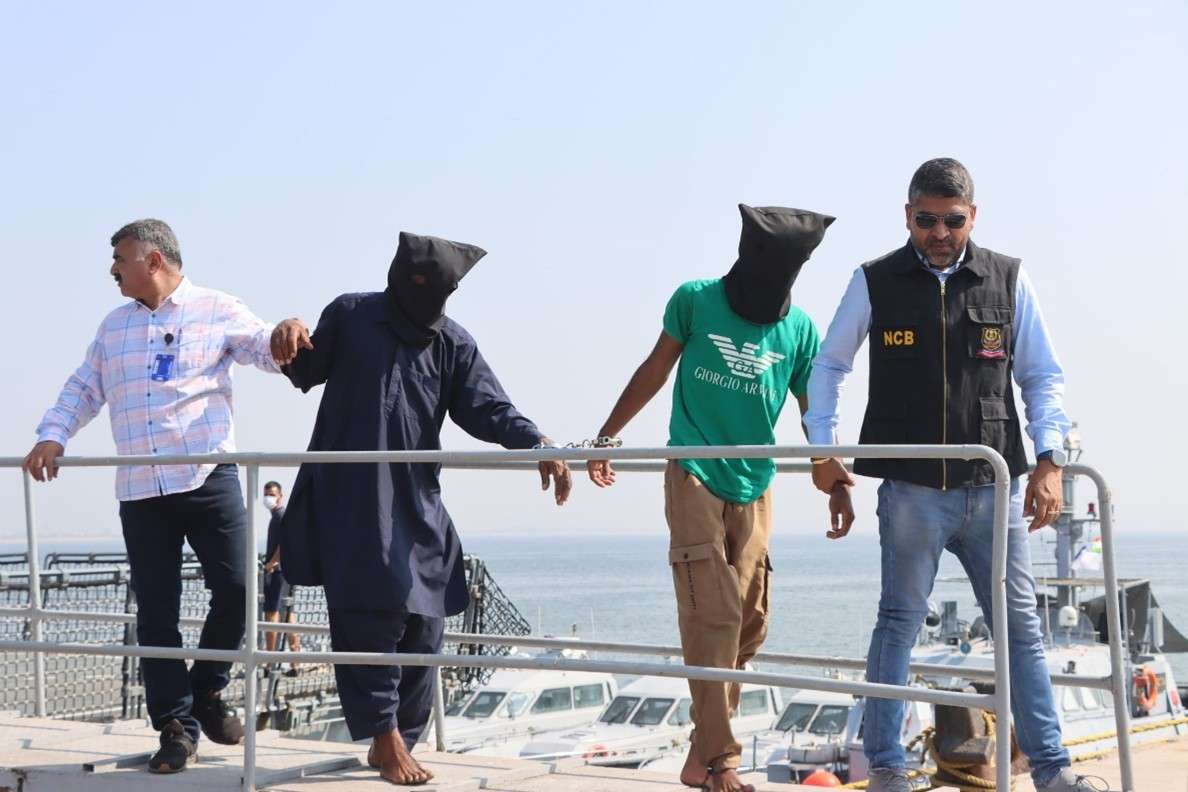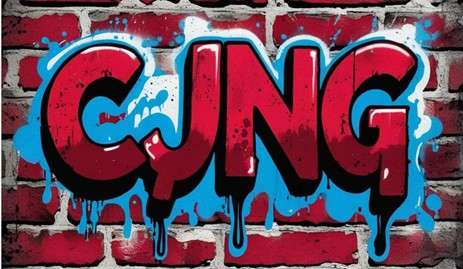The Cartel Jalisco Nueva Generación (CJNG) is one of the notorious transnational cartels based in Mexico, indulging in trafficking fentanyl, methamphetamine, cocaine, and various illicit drugs. has expanded its operation beyond the Americas to Asia, including India. The Narcotic Controls Bureau (NCB) of India uncovered a CJNG-linked methamphetamine lab in Greater Noida, underscoring the group’s reach beyond continents, the evolving role of India in global drug trafficking networks, and the critical vulnerabilities in India’s domestic and international security posture. This article explores CJNG’s origins, global operations, and activities in India, analyzing implications for Indian national security.
Emergence and tactics
CJNG is a splinter group of the Milenio Cartel, which is an offshoot of the Sinaloa Cartel, and has emerged as one of the most dominant criminal networks offset from the Sinaloa Cartel itself in 2010. Originally, it was operated as an armed wing of the Sinaloa Cartel to handle rival cartels and authorities; however, the internal conflicts and the death of Sinaloa founder and drug lord Ignacio ‘Nacho’ Coronel paved the way for its emergence. Under Nemesio Oseguera Cervantes, alias ‘El Mencho,’ CJNG rapidly started dominating Mexico’s criminal networks, controlling drug trafficking in at least 27 out of Mexico’s 32 states.
Known for its extreme violence, including massacres and attacks on public officials; its infamous strategies like military-style operations; and the use of advanced weaponry and sophisticated financial networks involving encrypted communication and cryptocurrency to secure logistics and financial operations, it exemplifies the evolution of contemporary transnational organized crime. CJNG diversified its portfolio to include methamphetamine and fentanyl trafficking, extortion, kidnapping, fuel theft, and money laundering. Reports suggest that it preferred to act like a tax master, taxing local businesses and branch licensers licensing drug dealing, trafficking, prostitution, tobacco, and alcohol.
Global outreach
CJNG carried out its activities predominantly in the United States, being the primary distributor of methamphetamine and fentanyl, and extended its scope into Europe, Australia, and Asia through criminal partnerships and diaspora connections. Notably, it seeks precursor chemicals that are used for synthesis, many of which are prominently produced in India and China. The cartel collaborates with criminal groups in various countries, leveraging alliances to control drug production and trafficking routes and having money laundering schemes, including cryptocurrency and hawala systems, to move illicit crime globally.
In this year, the U.S. Department of the Treasury designated CJNG as a Foreign Terrorist Organization (FTO) and Specially Designated Global Terrorist (SDGT), highlighting its role in fentanyl trafficking, crude oil smuggling, and gaining revenue in billions. The recruitment camp has been identified at Teuchitlán, Jalisco, in March 2025 and revealed the brutal methods of recruitment, including executing recruits if they defy or defer orders.
CJNG’s Operations in India
In October 2024, a joint operation by NCB and Delhi Police Special Cell dismantled a clandestine methamphetamine lab in Greater Noida, Uttar Pradesh, and seized 95.5 kg of amphetamine in both liquid and solid forms. A series of investigations revealed that the lab was financed by the Mexican cartel CJNG and involved a Mexican national, a Mumbai-based chemist, a Delhi businessman, and a Tihar Jail warden, who was arrested for setting up the facility. This incident marked the first publicly known instance of CJNG producing synthetic drugs on Indian soil, an early sign of India’s transition from a transit point to a production hub for hard drugs.
Enquiry details further that CJNG routed funds via cryptocurrency to Dubai and then reached Delhi using Hawala, demonstrating the sophisticated financial handling. Reportedly, the blueprint of the lab facility was drawn inside Tihar Jail, spotlighting CJNG’s capabilities to exploit local criminal networks and public institutional vulnerabilities. Moreover, reports suggest that CJNG allegedly planned to expand its operation throughout India by establishing multiple drug labs in India to reduce transit risks.
A growing presence of International Drug Cartels in India
The CJNG activities in India are a part of a broader trend of international drug cartels establishing footprints in the country. India’s strategic location and robust chemical industry are captivating the attention of international drug cartels, changing country dynamics from a transit hub into a production hub. As we speak, NCB has carried out a series of high-profile operations in 2024 and 2025 under the scope of ‘drug-free country’. It exposed the presence of transnational syndicates, including Cartel Jalisco Nueva Generación (CJNG). In early 2024, NCB cracked a sophisticated drug cartel operating across Delhi, Rajasthan, Punjab, and Dubai, involving Indian, Mexican, Canadian, and British nationals. At the end of 2024, a joint operation by NCB, the Indian Navy, and Gujarat Police seized approximately 700 kg of methamphetamine in Gujarat, disrupting a major international trafficking syndicate.
In March 2025, authorities in Imphal and Guwahati struck another blow, capturing methamphetamine tablets worth ₹88 crore and arresting four members of an international drug cartel. In the latest landmark operation, ‘MAD MAX’, led by NCB’s Headquarters Operations Delhi, cracked down on an international syndicate operating across India, Australia, Europe, and the U.S., leading to a series of arrests in these countries. This operation uncovered a digital-age cartel using encrypted communication, cryptocurrency payment, and international drop-shipping methods, illustrating India’s emergence as a critical node in a global drug trafficking network.

Implications for Indian National Security
Drug trafficking and precursor chemicals
India is one of the world’s leading producers of precursor chemicals such as ephedrine and pseudoephedrine, both used in methamphetamine production. Drug cartels’ global procurement efforts put the risk of the Indian supply chain being exploited for illicit activities. Potential illicit narcotic labs in India could fuel domestic consumption, exacerbating public health issues and straining law and order in the country.
Transnational Crime Nexus
The cartel’s collaboration with local businessmen, criminals, and Tihar Jail wardens implies critical concern over the growing criminal nexus. Exploiting these kinds of vulnerabilities could pave a way for human trafficking, arms trafficking, and money laundering and potentially enhance hostile non-state actors, including insurgent groups, terrorists, and extremist elements.
Financial Security
The use of cryptocurrencies and money laundering techniques, including hawala systems and shell companies, reflects challenges faced by India in curbing illicit financial flows and threatens India’s financial integrity.
Regional Stability
India’s role as a source of precursor chemicals and a significant drug production hub could draw scrutiny from international partners. As a rising power in the region, drug overflow could affect regional stability and may disrupt the geopolitical ambitions in the region.
What’s next for India?
Amid the growing presence of international drug cartels, India should further strengthen counternarcotics measures through advanced training, technology, and international cooperation. Establishing and enhancing intelligence-sharing mechanisms with countries where drugs are prominent, such as the U.S., Mexico, and regional partners like ASEAN nations, to track notable cartels’ activities in Asia could give additional support in prevention. Strengthening of maritime and land border surveillance, particularly usage of advanced technologies like drones and AI-based analytics, enhances detection.
India should bolster the Financial Intelligence Unit (FIU) to detect and disrupt cryptocurrencies and hawala-based transactions. Additionally, more focus should be given to prison reformation to prevent criminals from learning and cooperating with other criminals. Finally, a mere effort of government alone will not serve the public well; instead, the public should also be aware and act if illicit drug flows have come to be known.

